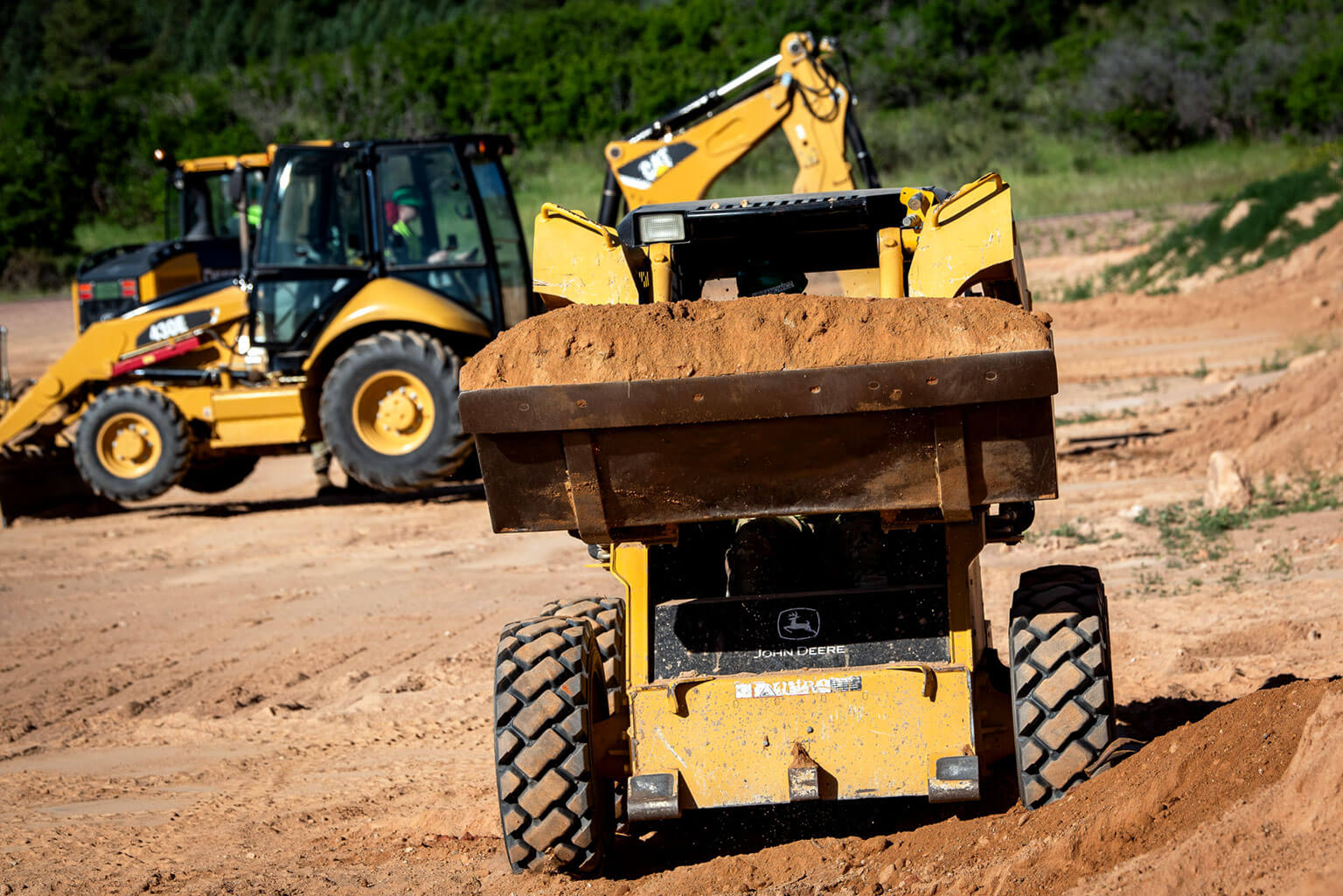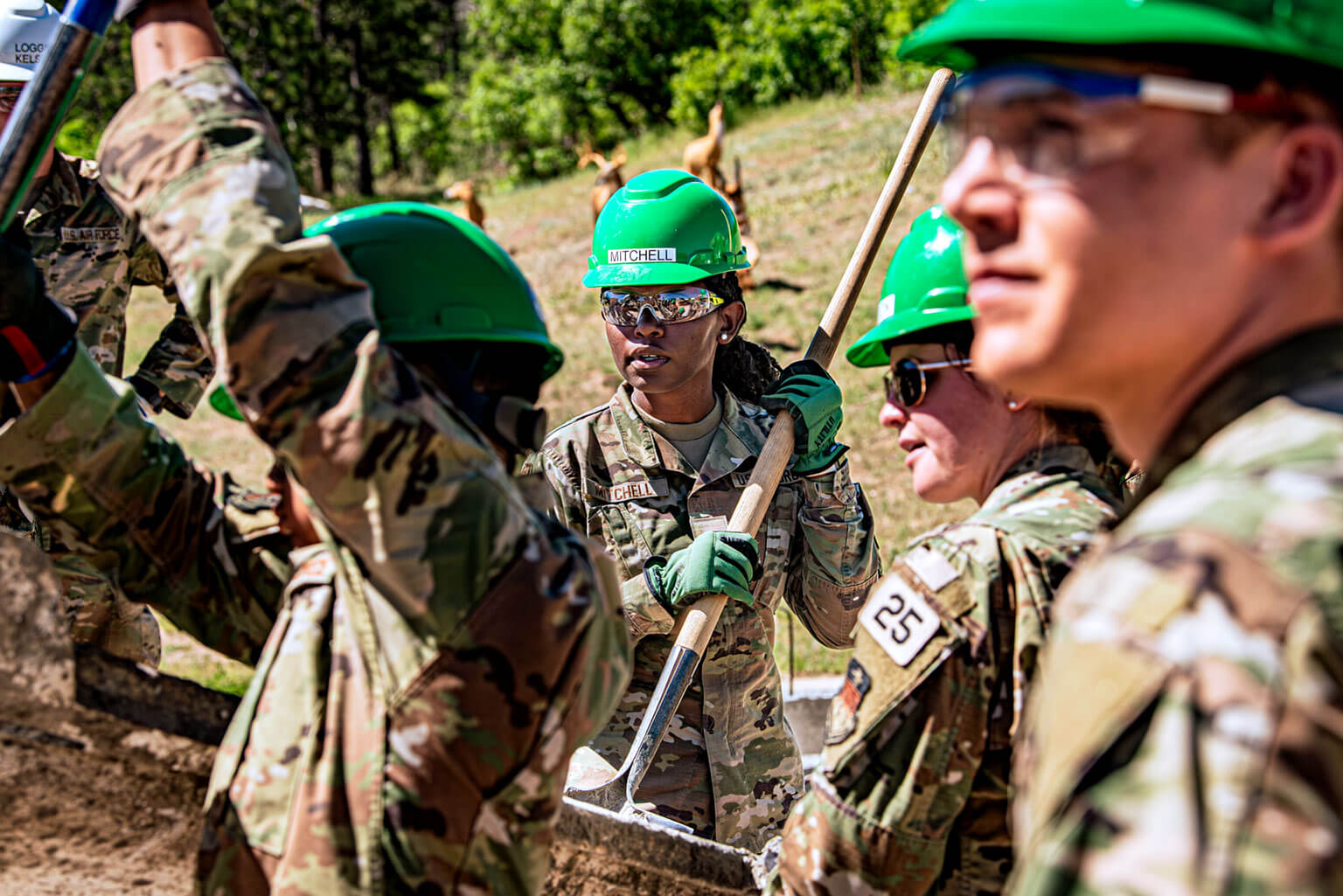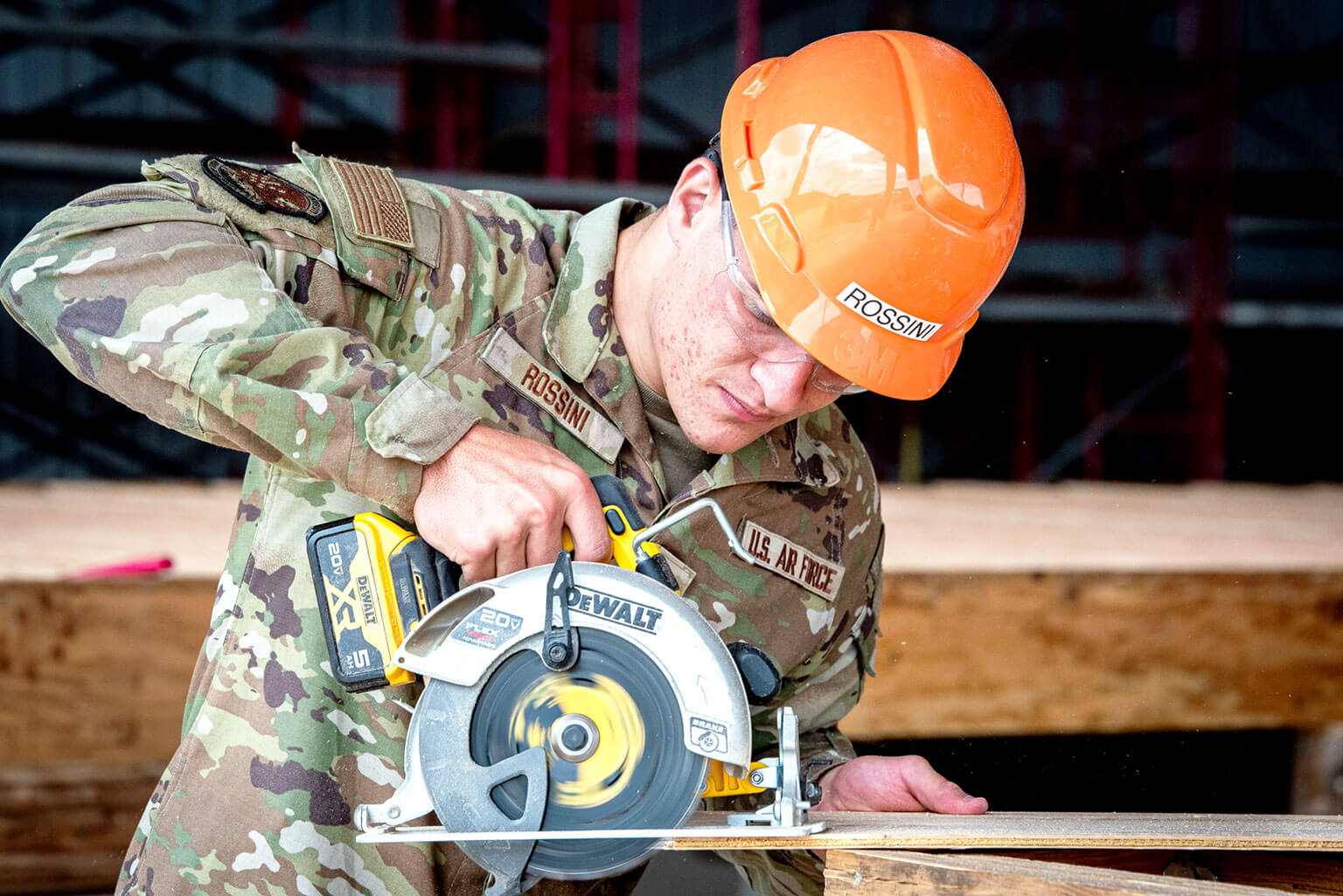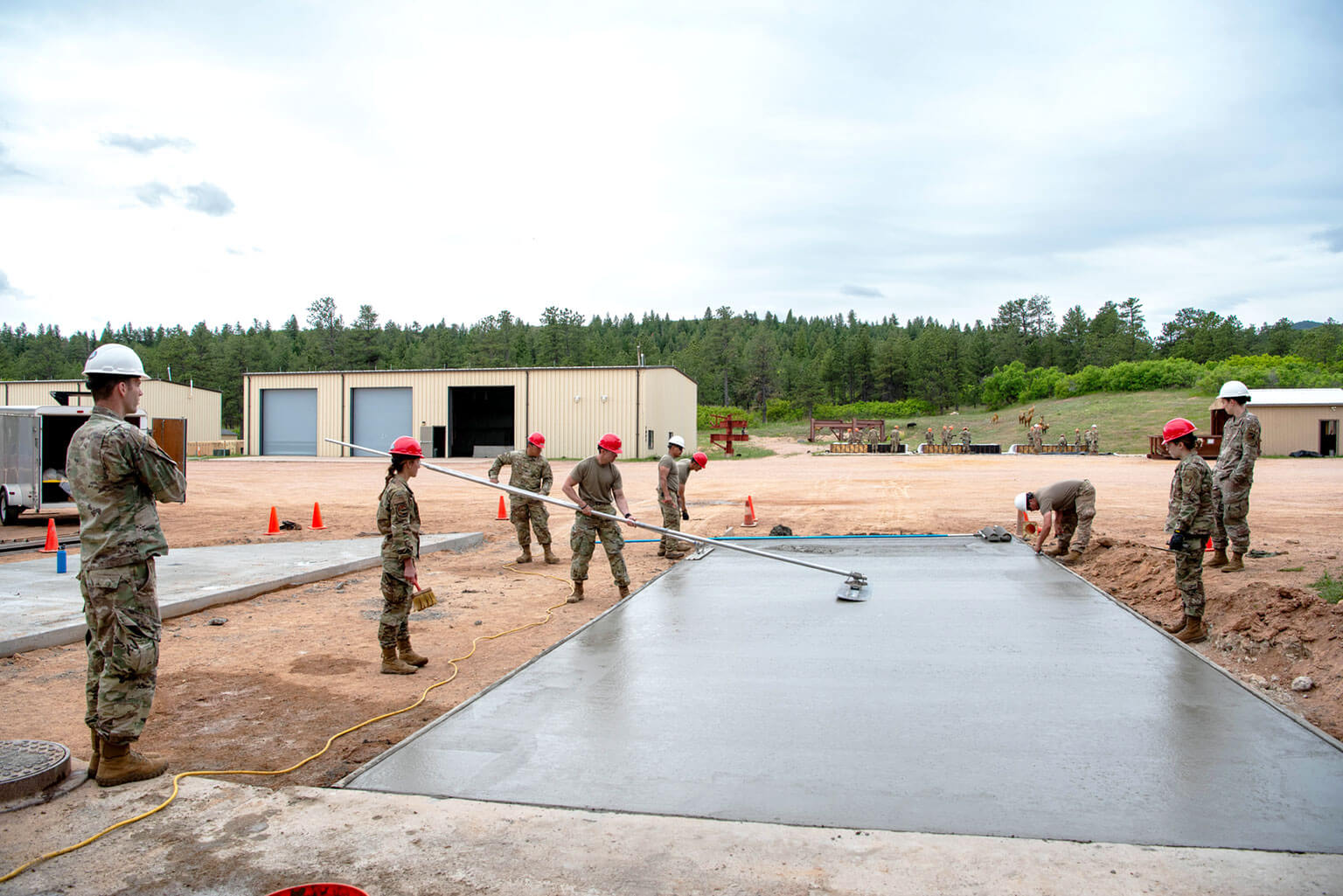Engineering cadets gain experience as they build homes for needy

Cadets received hands-on experience driving skid steers during the Field Engineering and Readiness Laboratory at Jacks Valley June 3, 2024. Each summer, rising two-degrees practice their engineering skills in the three-week academic course. (U.S. Air Force photo by Justin Pacheco)
By Randy Roughton
U.S. Air Force Academy Strategic Communications
U.S. AIR FORCE ACADEMY, Colo. – Almost 100 cadets majoring in Civil Engineering or Mechanical Engineering deploy to a training site each summer. During the three-week Field Engineering and Readiness Laboratory or FERL at Jacks Valley, rising two-degrees construct shelters, survey land, build roads, purify water, and operate heavy equipment simulating a deployment.
Construct first, design later
The mandatory FERL three-credit hour course allows cadets to practice their engineering skills in the field. Cadets build the homes under the “construct-first, design-later” systems approach for engineering education. Through FERL, the department partners with the Southwest Indian Foundation and the Navajo Nation to build mobile modular housing units called Hogans. The Hogans are designed alongside the SWIF to ensure cultural considerations are met, such as traditional eight-sided interiors and exteriors. After construction, the Hogans are shipped to the Navajo Nation in New Mexico, where they are assembled as permanent housing for needy families.

Cadet 2nd Class Nevaeh Mitchell and other Department of Civil and Environmental Engineering cadets lay concrete during the Field Engineering and Readiness Laboratory at Jacks Valley June 6, 2024. Each summer, rising two-degrees develop their engineering skills in the three-week course. (U.S. Air Force photo by Dylan Smith)
Critical engineering experience
The hands-on engineering experience cadets gain from FERL is critical, said Camp Commander Cadet 1st Class Hailey Routson. Indeed, about 30 percent of Air Force commissioned civil engineers are U.S. Air Force Academy graduates who experienced FERL as cadets.
“FERL’s most important aspects are the hands-on experience and the construct-first, design-later aspect,” Routson said. “Most cadets have never taken an engineering class beside our basic core course. But once cadets see a house’s foundation or bridge built, they take that lesson into their upper-level classes and link it back to FERL.”

An enlisted mentor works with a circular saw during the Field Engineering and Readiness Laboratory at Jacks Valley June 6, 2024. Each summer, rising two-degrees practice their engineering skills in the three-week workshop. (U.S. Air Force photo by Dylan Smith)
The curriculum’s cornerstone
Since 1994, civil engineering cadets have benefitted from FERL’s field training, considered the cornerstone of their curriculum. The outdoor laboratory provides many activities, ranging from roadway paving and surveying to concrete beam construction and testing and wood-frame house construction. They also work with worldwide enlisted mentors who are experts in electricity, plumbing and other essential skills. Working with the mentors in the enlisted ranks gives the cadets an appreciation for enlisted members who will eventually work on their teams, said civil and environmental engineering instructor Capt. Patrick Henegan.
“As a commissioned civil engineering officer, you will be asking the people under you to put in hard physical work like they are experiencing during FERL,” Henegan said. “It builds a lot of character to see what they go through day-to-day and understand what you will be asking them to do.”
The humanitarian mission
As important as the hands-on experience is for upper-level civil engineering classes, many cadets appreciate the humanitarian aspect of their work. Knowing people will live in the two houses they built added more motivation, Routson said.
“It made it much more meaningful,” she said. “It was a favorite activity for the Class of 2025 last year and again for the 2026 class this year. Building a concrete beam and beginning to understand it was really cool, but learning a new skill so we can help somebody else and give back to the community was something totally different.”

Department of Civil and Environmental Engineering cadets pour concrete during the Field Engineering and Readiness Laboratory at Jacks Valley June 4, 2024. Each summer, rising two-degrees practice their engineering skills in the three-week course. (U.S. Air Force photo by Christina Merrill)
See more FERL photos on Flickr.